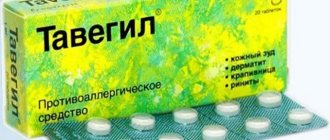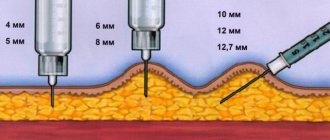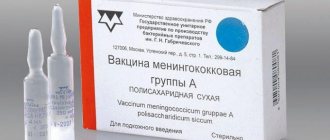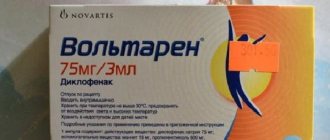Hypersensitivity to acyclovir, valacyclovir or any other component of the drug; lactase deficiency, lactose intolerance, glucose-galactose malabsorption; children up to 3 years old.
Side effect:
To assess the frequency of AEs, the following criteria were used: “very often” (> 1/10); “often” (≥ 1/100, < 1/10); “infrequently” (≥ 1/1000, < 1/100); “rarely” (≥ 1/10000, < 1/1000); “very rare” (< 1/10000). AEs are grouped in accordance with the system-organ class of the medical dictionary for regulatory activities MedDRA, as well as the recommendations of the World Health Organization.
- From the circulatory and lymphatic system: very rarely - anemia, leukopenia, thrombocytopenia.
- From the immune system: rarely - anaphylaxis.
- From the central nervous system: often - headache, dizziness; very rarely - agitation, confusion, tremor, ataxia, dysarthria, hallucinations, psychotic symptoms, convulsions, drowsiness, encephalopathy, coma.
- Typically, these side effects were observed in patients with renal failure or in the presence of other precipitating factors and were mainly reversible.
- From the respiratory system, chest and mediastinal organs: rarely - shortness of breath.
- From the digestive system: often - nausea, vomiting, diarrhea, abdominal pain.
- From the liver and biliary tract: rarely - a reversible increase in bilirubin and liver enzymes in the blood; very rarely - hepatitis, jaundice.
- From the skin and subcutaneous tissue: often - itching, rash, including photosensitivity; uncommon – urticaria, rapid diffuse hair loss. Since this type of alopecia is observed in various diseases and during therapy with many drugs, its connection with taking acyclovir has not been established; rarely - angioedema; very rarely - toxic epidermal necrolysis, exudative erythema multiforme.
- From the urinary system: rarely - increased concentrations of urea and creatinine in the blood serum; very rarely - acute renal failure, renal colic. Renal colic may be associated with renal failure and crystalluria.
- Others: often - fatigue, fever.
Description:
Round flat-cylindrical tablets of white or almost white color with a chamfer and a score.
Pharmacological group:
antiviral agent.
ATX code:
J05AB01
pharmachologic effect
Pharmacological properties
Pharmacodynamics
Mechanism of action
Acyclovir
is a synthetic analogue of a purine nucleoside that has the ability to inhibit in vitro and in vivo human herpes viruses, including herpes simplex virus (HSV) types 1 and 2, varicella zoster virus and herpes zoster virus (Varicella zoster virus (Varicella zoster virus). VZV), Epstein-Barr virus (EBV) and cytomegalovirus (CMV). In cell culture, acyclovir has the most pronounced antiviral activity against HSV-1, followed in descending order of activity by HSV-2, VZV, EBV and CMV.
The inhibitory effect of acyclovir on herpes viruses (HSV-1, HSV-2, VZV, EBV and CMV) is highly selective. Acyclovir is not a substrate for the thymidine kinase enzyme in uninfected cells, therefore acyclovir is of low toxicity to mammalian cells. However, thymidine kinase of cells infected with HSV, VZV, EBV and CMV viruses converts acyclovir into acyclovir monophosphate, a nucleoside analogue, which is then sequentially converted into diphosphate and triphosphate under the action of cellular enzymes. The incorporation of acyclovir triphosphate into the viral DNA chain and subsequent chain termination blocks further replication of the viral DNA.
In patients with severe immunodeficiency, long-term or repeated courses of acyclovir therapy may lead to the emergence of resistant strains, so further treatment with acyclovir may be ineffective. Most isolated strains with reduced sensitivity to acyclovir had a relatively low content of thymidine kinase, as well as a disorder in the structure of the viral thymidine kinase or DNA polymerase. In vitro exposure of herpes simplex virus (HSV) strains to acyclovir may also result in the formation of strains that are less sensitive to it. A correlation has not been established between the sensitivity of herpes simplex virus (HSV) strains to acyclovir in vitro and the clinical effectiveness of the drug.
Pharmacokinetics
Suction
Acyclovir is only partially absorbed from the intestine. After taking 200 mg of acyclovir every 4 hours, the mean maximum steady-state plasma concentration (Cssmax) was 3.1 μM (0.7 μg/ml), and the mean steady-state minimum plasma concentration (Cssmin) was 1.8 μM (0 .4 µg/ml). When administered orally 400 mg and 800 mg of acyclovir every 4 hours, Cssmax was 5.3 µM (1.2 µg/ml) and 8 µM (1.8 µg/ml), respectively, and Cssmin was 2.7 µM (0.6 µg /ml) and 4 µM (0.9 µg/ml), respectively.
Distribution
The concentration of acyclovir in the cerebrospinal fluid is approximately 50% of its concentration in blood plasma.
Acyclovir binds to blood plasma proteins to an insignificant extent (9-33%), so drug interactions due to displacement from binding sites with blood plasma proteins are unlikely.
Removal
In adults, after taking acyclovir orally, the half-life from blood plasma is about 3 hours. Most of the drug is excreted unchanged by the kidneys. The renal clearance of acyclovir significantly exceeds the clearance of creatinine, which indicates that acyclovir is eliminated through not only glomerular filtration, but also tubular secretion. 9-carboxymethoxy-methylguanine is the main metabolite of acyclovir and accounts for about 10-15% of the dose excreted in the urine. When acyclovir was administered 1 hour after taking 1 g of probenecid, the half-life of acyclovir and AUC (area under the concentration-time pharmacokinetic curve) increased by 18 and 40%, respectively.
Interaction with other drugs:
No clinically significant interactions were observed with the use of Acyclovir.
Acyclovir is excreted unchanged in the urine by active tubular secretion. All drugs with a similar route of elimination may increase plasma concentrations of acyclovir. Acyclovir increases the AUC of theophylline by approximately 50% when administered concomitantly, so it is recommended that plasma theophylline concentrations be measured when acyclovir is coadministered. Probenecid and cimetidine increase the AUC (area under the concentration-time curve) of acyclovir and reduce its renal clearance. There was an increase in plasma AUC for acyclovir and the inactive metabolite mycophenolate mofetil, an immunosuppressant used in transplantation, when both drugs were used simultaneously. However, no dose adjustment is required due to the broad therapeutic index of acyclovir.
Indications for use
— Treatment of infections of the skin and mucous membranes caused by the herpes simplex virus, including primary and recurrent genital herpes;
- prevention of relapses of infections caused by the herpes simplex virus in patients with normal immune status;
- prevention of infections caused by the herpes simplex virus in patients with immunodeficiency;
- treatment of chickenpox and herpes zoster (early treatment of herpes zoster with acyclovir has an analgesic effect and can reduce the incidence of postherpetic neuralgia).
Use during pregnancy and lactation.
Fertility
There is no data on the effect of acyclovir on female fertility.
A study of 20 male patients with normal sperm counts found that oral acyclovir up to 1 g per day for 6 months had no clinically significant effect on sperm count, motility or morphology.
Pregnancy
The post-registration registry of pregnancies during treatment with acyclovir collected data on pregnancy outcomes in women taking acyclovir in different dosage forms. In an analysis of registry data, there was no increase in the number of birth defects in infants whose mothers took acyclovir during pregnancy compared with the general population. The identified birth defects were not uniform or consistent, suggesting a common cause.
However, caution should be exercised when prescribing Acyclovir to women during pregnancy and assess the expected benefit to the mother and the possible risk to the fetus.
Breastfeeding period
After taking the drug Acyclovir orally at a dose of 200 mg 5 times a day, acyclovir was determined in breast milk at a concentration ranging from 60 to 410% of the plasma concentration. At such concentrations in breast milk, breastfed infants can receive acyclovir in doses up to 0.3 mg/kg/day. Given this, caution should be exercised when prescribing Acyclovir to nursing women.
Similar drugs:
- Dexamethasone Solution for intravenous and intramuscular administration
- Calcium gluconate Chewable tablets
- Pulmicort Suspension for inhalation
- Cetrine Oral tablets
- Sodium cromoglicate Substance-powder
- Diprospan Solution for injection
- Mometasone furoate Substance-powder
- L-cet Oral tablets
- Dexamethasone Solution for injection
- Adrenaline (Adrenaline) Solution for injection
** The Drug Directory is intended for informational purposes only. For more complete information, please refer to the manufacturer's instructions. Do not self-medicate; Before starting to use Acyclovir, you should consult a doctor. EUROLAB is not responsible for the consequences caused by the use of information posted on the portal. Any information on the site does not replace medical advice and cannot serve as a guarantee of the positive effect of the drug.
Are you interested in the drug Acyclovir? Do you want to know more detailed information or do you need a doctor's examination? Or do you need an inspection? You can make an appointment with a doctor - the Euro lab is always at your service! The best doctors will examine you, advise you, provide the necessary assistance and make a diagnosis. You can also call a doctor at home . Euro lab clinic is open for you around the clock.
** Attention! The information presented in this medication guide is intended for medical professionals and should not be used as a basis for self-medication. The description of the drug Acyclovir is provided for informational purposes and is not intended for prescribing treatment without the participation of a doctor. Patients need to consult a specialist!
If you are interested in any other drugs and medications, their descriptions and instructions for use, information about the composition and form of release, indications for use and side effects, methods of use, prices and reviews of drugs, or you have any other questions and suggestions - write to us, we will definitely try to help you.
Directions for use and doses
Acyclovir tablets can be taken with meals, since food intake does not significantly interfere with its absorption. The tablets should be taken with a full glass of water.
Adults
Treatment of skin and mucous membrane infections caused by the herpes simplex virus, including primary recurrent genital herpes
For the treatment of infections caused by the herpes simplex virus, the recommended dose of Acyclovir is 200 mg orally 5 times a day (every 4 hours, except during nighttime sleep). The course of treatment is 5 days, but can be extended for severe primary infections.
In case of severe immunodeficiency (for example, after bone marrow transplantation) or in case of impaired absorption from the intestine, the dose of Acyclovir can be increased to 400 mg. As an alternative, the possibility of using acyclovir in a lyophilisate dosage form for the preparation of a solution for infusion may be considered.
Treatment should begin as soon as possible after infection occurs; in case of relapses, it is recommended to prescribe the drug already in the prodromal period or the appearance of the first elements of the rash.
Prevention of recurrent infections caused by the herpes simplex virus in patients with normal immune status
To prevent recurrence of infections caused by the herpes simplex virus in patients with normal immune status, the recommended dose of Acyclovir is 200 mg orally 4 times a day (every 6 hours).
Many patients benefit from a more convenient treatment regimen of 400 mg orally 2 times a day (every 12 hours).
In some cases, lower doses of Acyclovir are effective: 200 mg orally 3 times a day (every 8 hours) or 200 mg orally 2 times a day (every 12 hours).
Some patients may experience exacerbation of infection when taking a total daily dose of 800 mg.
Treatment with Acyclovir should be interrupted every 6-12 months to identify possible changes in the course of the disease.
Prevention of infections caused by herpes simplex virus in patients with immunodeficiency
For the prevention of infections caused by the herpes simplex virus in patients with immunodeficiency, the recommended dose of Acyclovir is 200 mg orally 4 times a day (every 6 hours).
In case of severe immunodeficiency (for example, after bone marrow transplantation) or in case of impaired absorption from the intestine, the dose of the drug can be increased to 400 mg orally. As an alternative, the possibility of using acyclovir in a lyophilisate dosage form for the preparation of a solution for infusion may be considered.
The duration of the prophylactic course of therapy is determined by the length of the period during which there is a risk of infection.
Treatment of chickenpox and herpes zoster
For the treatment of chickenpox and herpes zoster, the recommended dose of Acyclovir is 800 mg orally 5 times a day (every 4 hours, except during night sleep). The course of treatment is 7 days.
Treatment of herpes zoster should begin as early as possible from the moment of the first manifestations of the disease, since in this case the treatment will be more effective.
Treatment of chickenpox in patients with normal immune status should begin within 24 hours of the onset of the rash.
In patients with severe immunodeficiency (for example, after bone marrow transplantation) or in cases of impaired absorption from the intestine, it is necessary to consider the possibility of prescribing acyclovir in a lyophilisate dosage form for the preparation of a solution for infusion.
Special patient groups
Children aged 3 years and older
Treatment of infections caused by the herpes simplex virus; prevention of infections caused by the herpes simplex virus in patients with immunodeficiency
- aged 3 years and older - the same doses as for adults.
Treatment of chickenpox
- aged 6 years and older - 800 mg orally 4 times a day;
- aged 3 to 6 years - 400 mg orally 4 times a day.
More precisely, the dose can be determined at the rate of 20 mg/kg body weight (but not more than 800 mg) orally 4 times a day. The course of treatment is 5 days.
Prevention of recurrence of infections caused by the herpes simplex virus in patients with normal immune status; treatment of herpes zoster
There are no data on dosage regimen.
Elderly patients
The likelihood of renal failure in elderly patients must be taken into account, and doses should be adjusted according to the degree of renal failure (see subsection "Patients with impaired renal function").
It is necessary to ensure that adequate water balance is maintained.
Patients with impaired renal function
Caution must be exercised when prescribing Acyclovir to patients with impaired renal function.
It is necessary to ensure that adequate water balance is maintained.
In patients with renal failure, oral administration of acyclovir at recommended doses for the treatment and prevention of infections caused by the herpes simplex virus does not lead to accumulation of the drug to concentrations exceeding established safe levels. However, in patients with creatinine clearance less than 10 ml/min, the dose of Acyclovir is recommended to be reduced to 200 mg orally 2 times a day (every 12 hours).
For the treatment of chickenpox and herpes zoster, the recommended doses of Acyclovir tablets are:
— with creatinine clearance less than 10 ml/min—800 mg orally 2 times a day (every 12 hours);
- with creatinine clearance 10-25 ml/min - 800 mg orally 3 times a day (every 8 hours).
Acyclovir
Home Medical Encyclopedia Medicines in alphabet A
Synonyms: Virolex, Zovirax, Aicloguanosine. Cycloviran, Milavir, Herpex, Medovir, Lizavir, Cyclovir.
Pharmachologic effect. An antiviral drug that is particularly effective against herpes simplex viruses (a virus that causes skin lesions and
mucous membranes) and herpes zoster (a virus that causes disease of the central and peripheral nervous system with the appearance of a blistering rash along the sensory nerves).
Acyclovir is an analogue of the purine nucleoside deoxyguanidine, a normal component of DNA (deoxyribonucleic acid - a component of the cell nucleus responsible for the transfer of hereditary information).
The similarity of the structures of acyclovir and deoxyguanidine allows acyclovir to interact with viral enzymes, which leads to the interruption of viral replication. After the introduction of acyclovir into a cell affected by herpes, under the influence of thymidine kinase secreted by the virus, aiclovir is converted into acyclovir monophosphate, which is converted into acyclovir diphosphate by host cell enzymes. and then into the active form of acyclovir triphosphate, which blocks the replication of viral DNA (a complex intracellular mechanism of DNA division, which results in the multiplication of viruses). The drug acts selectively on viral DNA synthesis. Acyclovir triphosphate has virtually no effect on the DNA replication of the host cell (human cell).
When taken orally, acyclovir is only partially absorbed (about 20%). The half-life (the time during which the drug is eliminated) when taken orally and administered into a vein is about 3 hours. It is excreted mainly by the kidneys in unchanged form, partly in the form of a metabolite (metabolite product). In case of renal failure, the half-life increases significantly (up to 19V2 hours).
Indications for use. Acyclovir for herpes prevents the formation of new rash elements, reduces the likelihood of skin dissemination (spread through the skin) and visceral complications (complications to internal organs), accelerates the formation of crusts, and reduces pain in the acute phase of herpes zoster.
Acyclovir is administered intravenously for infections caused by the herpes simplex virus in patients with impaired immune systems; in severe forms of primary genital infections if the infections are caused by the herpes simplex virus; for infections caused by the herpes zoster virus; for the prevention of infections caused by the herpes simplex virus in patients with severely impaired immune systems (during organ transplantation, tumor chemotherapy).
The drug also has an immunostimulating effect (aimed at activating the body's defenses).
Method of administration and dose. Acyclovir is used orally, intravenously and locally (in the form of ointment and cream).
Acyclovir tablets are prescribed for infections of the skin and mucous membranes caused by the herpes simplex virus, and for the prevention of these diseases in patients with impaired immune systems, and in patients with herpes zoster - with a normal immune system. For infections caused by the herpes simplex virus, adults are given 1 tablet (0.2 g) 5 times a day (except at night), and for prevention - 1 tablet 4 times a day; for herpes zoster - 4 tablets (0.8 g) 5 times a day. Children over 2 years of age are prescribed the adult dose; up to 2 years - half the adult dose. The duration of treatment is usually 5 days, for herpes zoster - another 3 days after the signs of the disease disappear. It is not recommended to administer the drug to newborns.
Administered intravenously to adults and children over 12 years of age, 5 mg/kg 3 times a day (every 8 hours); for herpeszoster (shingles) in patients with immune system disorders - 10 mg/kg every 8 hours; children from 3 months. up to 12 years - 5 mg/kg (250 mg/m2 body surface).
For intravenous administration, the contents of 1 ampoule with acyclovir (250 mg) are diluted in 10 ml of isotonic sodium chloride solution or a special solvent. The solution can be administered by injection slowly (over an hour) or used dropwise, for which the resulting solution (25 mg in 1 ml) is diluted in an additional 50 ml of solvent, or the contents of 2 ampoules (500 mg) of acyclovir are diluted in 100 ml of solvent.
Freshly prepared solutions should be used.
In cases of impaired renal excretory function and in the elderly, the dose is reduced (taking into account the excretion of creatinine, the final product of nitrogen metabolism).
Prophylactically during organ transplantation and chemotherapy of tumors. The duration of acyclovir use is determined by the length of the risk period (usually 6 weeks).
Acyclovir eye ointment is used for herpetic keratitis (inflammation of the cornea caused by the herpes virus). Place in the conjunctival sac (the cavity between the back surface of the eyelids and the front surface of the eyeball) 5 times a day with an interval of 4 hours, usually for 7-10 days (for another 3 days after healing).
The cream is used for infections of the skin and mucous membranes caused by the herpes simplex virus, for herpes of the lips and genitals. Apply to the affected surface 5 times a day (every 1 hour). Duration of treatment is 5-10 days.
Side effect. Acyclovir is usually well tolerated. When taken orally, nausea, vomiting, diarrhea, headaches, allergic skin reactions, increased fatigue are possible, and when administered intravenously and orally, there is an increase in the content of urea, creatinine and bilirubin in the blood serum, and an increase in the activity of liver enzymes.
When acyclovir solutions enter the subcutaneous fatty tissue, a local reaction occurs.
Contraindications. Individual intolerance. The acceptability of use during pregnancy and breastfeeding has not yet been sufficiently studied.
Release forms. In bottles of 0.25 g (250 mg) in a package of 5 bottles; tablets but 9.2 g (200 mg) in packages of 20 and 100 pieces; 3% eye ointment (30 mg per 1 g) in tubes of 4.5 or 5 g; 5% cream (50 mg in 1 g) in tubes of 5 g.
Storage conditions. List B. In a place protected from light.
| print version | This information is not a guide to self-treatment. A doctor's consultation is required. |
Side effect
The frequency categories of adverse reactions listed below are estimates. For most adverse reactions, the necessary data to determine the frequency of occurrence are not available. In addition, the incidence of adverse reactions may vary depending on the indication.
The adverse reactions presented below are listed according to their frequency of occurrence, defined as follows: very common (>1/10), common (>1/100 and <1/10), uncommon (>1/1000 and <1/100 ), rare (>1/10,000 and <1/1000), very rare (<1/10,000).
Frequency of occurrence of adverse reactions
Blood and lymphatic system disorders
Very rare: anemia, leukopenia, thrombocytopenia.
Immune system disorders
Rarely: anaphylaxis.
Nervous system and mental status disorders
Common: headache, dizziness.
Very rare: agitation, confusion, tremor, ataxia, dysarthria, hallucinations, psychotic symptoms, convulsions, drowsiness, encephalopathy, coma.
Typically, these side effects were observed in patients with renal failure or in the presence of other precipitating factors and were mainly reversible (see section "Special instructions"
).
Respiratory, thoracic and mediastinal disorders
Rarely: shortness of breath.
Gastrointestinal disorders
Common: nausea, vomiting, diarrhea, abdominal pain.
Disorders of the liver and biliary tract
Rare: reversible increase in the concentration of bilirubin and liver enzymes in the blood.
Very rare: hepatitis, jaundice.
Skin and subcutaneous tissue disorders
Common: itching, rash, including photosensitivity.
Uncommon: urticaria, rapid diffuse hair loss.
Since rapid diffuse hair loss is observed in various diseases and during therapy with many drugs, its connection with the use of acyclovir has not been established.
Rarely: angioedema.
Very rare: toxic epidermal necrolysis, exudative erythema multiforme.
Renal and urinary tract disorders
Rarely: increased concentrations of urea and creatinine in the blood serum.
Very rare: acute renal failure, renal colic.
Renal colic may be associated with renal failure and crystalluria.
General and administration site disorders
Common: fatigue, fever.
Overdose
Acyclovir is only partially absorbed from the gastrointestinal tract. As a rule, no toxic effects have been reported with a random single dose of acyclovir up to 20 g. With repeated oral doses over several days of doses exceeding the recommended ones, disturbances from the gastrointestinal tract (nausea, vomiting) and nervous system (headache and confusion) were observed. Sometimes neurological effects such as seizures and coma may occur.
Patients require careful medical monitoring to identify possible symptoms of intoxication. Acyclovir is eliminated from the body by hemodialysis, so hemodialysis can be used to treat overdose.







